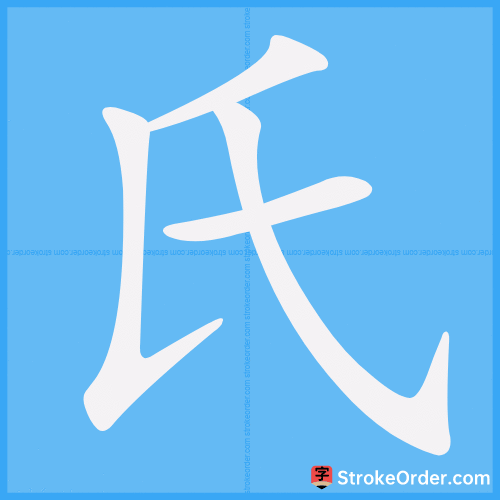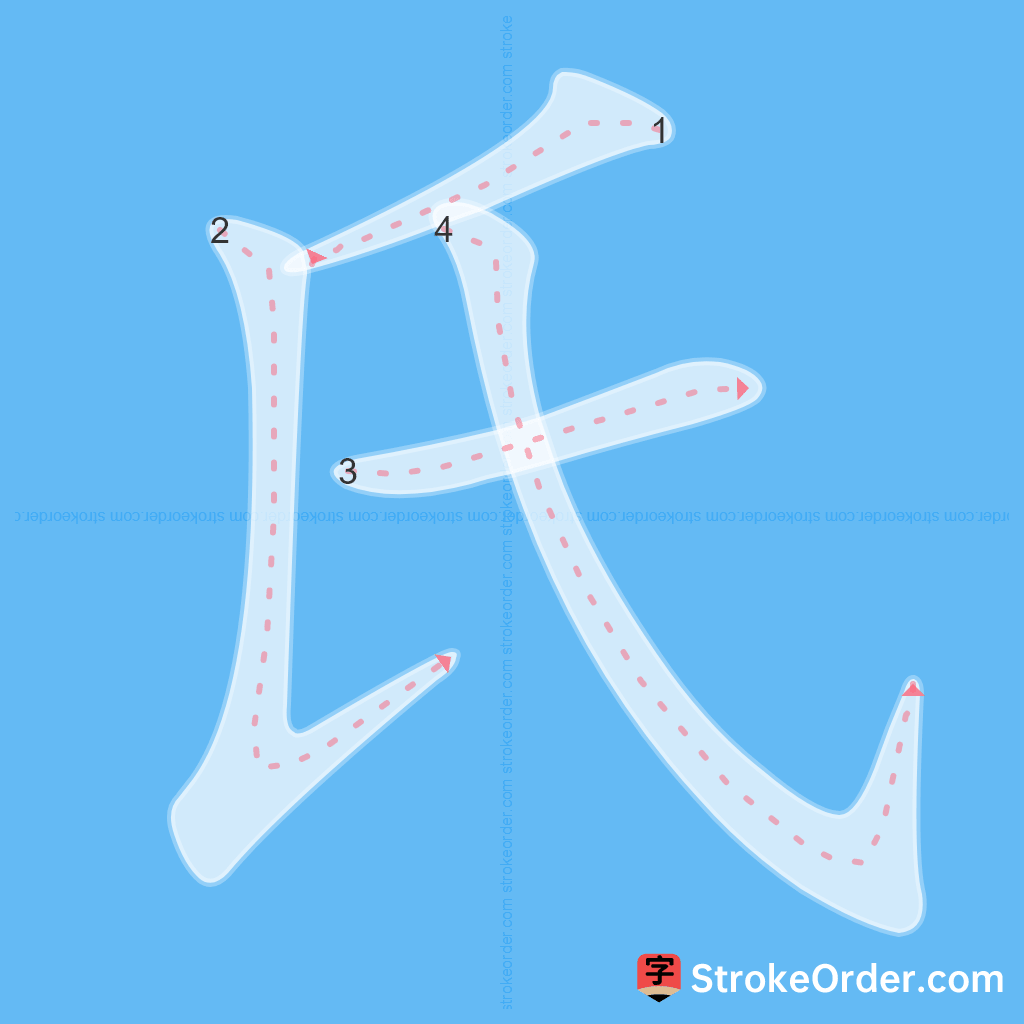氏 Stroke Order
Animated Stroke Order of 氏

Stroke Order Diagrams for 氏

Step-by-Step Handwriting Guide for 氏

Learn to Write Chinese Characters with Video Tutorials
Watch the video of writing the Chinese character "氏", learn the correct stroke order (笔顺) of the character "氏", and master the standard way of writing the character "氏".
Free Printable Handwriting Practice with Stroke Order: 氏
Printable Writing Practice Worksheet of "氏" in Portrait Orientation (Tian Zi Ge)

Printable Writing Practice Worksheet of "氏" in Landscape Orientation (Tian Zi Ge)

Information of 氏
Pinyin
shì、 zhī
Radical
氏
Strokes
4 strokes
Usage
★★★★★
Definition
clan name / maiden name
氏 [shì]
1. In ancient times, "姓" and "氏" were used distinctly. "姓" refers to the overall family name, while "氏" denotes branches of that family. Later, "姓" and "氏" became indistinct and were used interchangeably.
(古代“姓”和“氏”分用。姓是总的,氏是分支,后来姓和氏不分,可以混用。)
2. In ancient times, this referred to titles for emperors and nobility, later extending to call notable figures or experts.
(古代称呼帝王贵族等,后称呼名人、专家。)
3. This character signifies a title representing a clan system of the nobility in ancient times.
(【本义】:古代贵族标志宗族系统的称号)
4. It can also denote a family name, as distinguished from individual given names.
(一家成员所共同采用的姓,以别于个别的名。)
5. Refers to a form of address for a scholar, school of thought, expert, celebrity, or religious figure.
(对学术、流派、专家、名人或宗教的称呼。)
6. Additionally refers to titles associated with ancient hereditary offices.
(又指古代世业职官的称号。)
7. In the past, it was used after a married woman’s maiden name or commonly placed before husband’s last name.
(旧时放在已婚妇女的姓后,或如通常在父姓前还加上夫姓的称呼。)
8. Refers to a surname.
(姓)
代 [shì]
1. Means "this" or "that," interchangeable with "是".
(通“是”。此,这)
2. See also "zhī".
(另见 zhī)
【引】
1. Example from "墨子·天志下" illustrates usage related to major states: "知氏大国之君."
2. Example from "白虎通·宗族" mentions "唯氏三族之不虞."
3. Example from "汉书·地理志" mentions "氏为庄公."
阏 (yān) or 月 (yuè) can also be represented by this character.
1. [阏] - see "阏".
2. [月] - see "月".
[zhī]
1. Refers to the "月氏" (Yuèzhī), a name of a state in the Western Regions during the Han Dynasty.
2. See also "shì".
Input Method for 氏
Pinyin
shi4
Wubi
qav
Cangjie
hvp
Zhengma
rh
Four Corner
72740
Unicode
U+6c0f
Same Pronunciation Characters